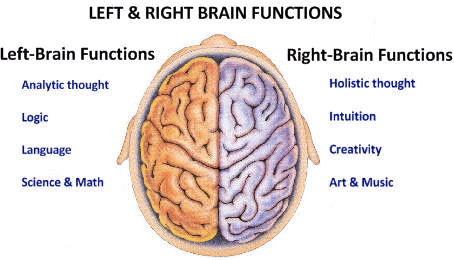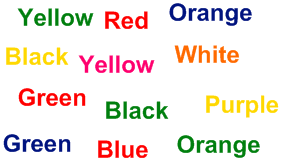|
|

Brain Development
A Brief Introduction on the Human Brain
The brain is a highly complex organ that develops very early in a human being's life. It contains an estimated 1011 (or 100 billion) neurons and supportive cells (Campbell & Reece, 2005), all functioning together to keep the body in balance. The brain is responsible for a multitude of functions and is used in practically all situations of everyday life; that is, even when people are accused for not using their brain after making an unwise personal decision. The largest, most complex part of the human brain is the cerebral cortex, which consists of two separate symmetrical hemispheres (left side/right side) each of which is responsible for the opposite half of the body (Auger & Rich, 2007). The four major lobes of the cerebral cortex are the frontal lobe, parietal lobe, temporal lobe, and the occipital lobe. From the moment a human being is conceived in their mother's womb, the human brain undergoes dramatic morphological and physiological changes. Unlike most outward physical changes that are apparent in healthy young growing children, the brain also grows and matures while dictating many of the changes that take place in the body.
Left Hemisphere Versus Right Hemisphere
The human brain is made up of two separate hemispheres connected together by thick bands of nerve fibers called the corpus callosum. Each side of the brain is perfectly identical in shape and structure, but the two segments greatly differ in function and activity. In order for the brain to function as a whole, the corpus callosum helps to exchange information between the two halves. As a child develops throughout his or her life, the use of one side of the brain gradually predominates the other, leading to a preference in behaviour and personality. What biologically determines brain dominance is still a question in thought for most researchers (Kaczmarek, 2004). Literature, however, shows that a majority of left-handers also have left-brain language abilities. This suggests that brain dominance may be determined by handedness, but the research is young and inconclusive (Kaczmarek, 2004). Furthermore, the dominant brain can have a very significant affect on a student's academic performance: study skills, homework routines, and their overall grades. Middle brain students tend to be more flexible in their learning style because they can benefit from the functions of both hemispheres concurrently.

Figure 1. Various left-brain, right-brain functions.
Each side of the brain produces distinct characteristics and processes information differently. The left-brain is associated with verbal, logic, and analytical thinking (Auger & Rich, 2007). It excels in naming and categorizing things, symbolic abstraction, speech, reading, writing, and arithmetic (Anderson, 1998). On the contrary, the right-brain controls a person's creativity and imagination. A person with a more active right-brain will function in a non-verbal manner and excel in visual, spatial, perceptual, and intuitive information (Anderson, 1998). Unlike the left-brain which manages information in a linear approach, the right-brain is not so much concerned with things falling into patterns (Auger & Rich, 2007). When dealing with complex or ambiguous situations, the right side is capable of quickly relating certain aspects together to make sense of the problem. As teachers, acknowledging this information is important because more emphasis has always been placed on activities in which left-brain students can excel though, such as reading, writing, and arithmetic, as compared to right-brain activities. Teachers must try to influence development of both sides equally in order to ensure that both groups are developing steadily.

Figure 2. Left-brain, right-brain conflict. Look at the coloured words above; try to say the colour - not the word. The right side of the brain (creativity) tries to say the colour while the left side (verbal) tries to say the word.
When making a lesson plan, a teacher must be sure to include material that will satisfy both right-brain and left-brain students to ensure a brain-friendly classroom. Because left-brain students appreciate working with sequences, a teacher can use this information by writing an outline of the lesson on the board. A teacher can also make handouts for students to follow along, since most right-brain students require visuals to help keep them focused during a lecture. In addition, if a teacher chooses to present information using an overhead projector, both types will be satisfied if the information includes a mixture of both words and diagrams. When assigning a project, a teacher who is knowledgeable about left-brain right-brain functions will provide students the option to work individually or in groups. Right-brain students enjoy the company of others because they seem to excel in dealing with ambiguity that can arise from different opinions, while left-brain students may find it distracting having to follow someone else's agenda. Likewise, left-brain students prefer when the classroom or study room is quiet and orderly; in contrast, music can effectively stimulate a right-brain student's creativity and imagination. If an elementary school teacher or high school teacher is teaching a lesson on the solar system for instance, space theme music can be quietly incorporated in the background while the teacher speaks, but then can be turned off after the lesson. Diagrams, maps, pictures, graphs, posters, and newspaper articles can also be used during a lesson or placed on the wall to stimulate the visual-spatial strengths of a right-brain student. In all, if these teaching strategies are implemented, it will help students feel comfortable in class, develop their ability to relate and distinguish information using both sides of the brain, and ultimately help them learn to express their thoughts and ideas more clearly.
|
|